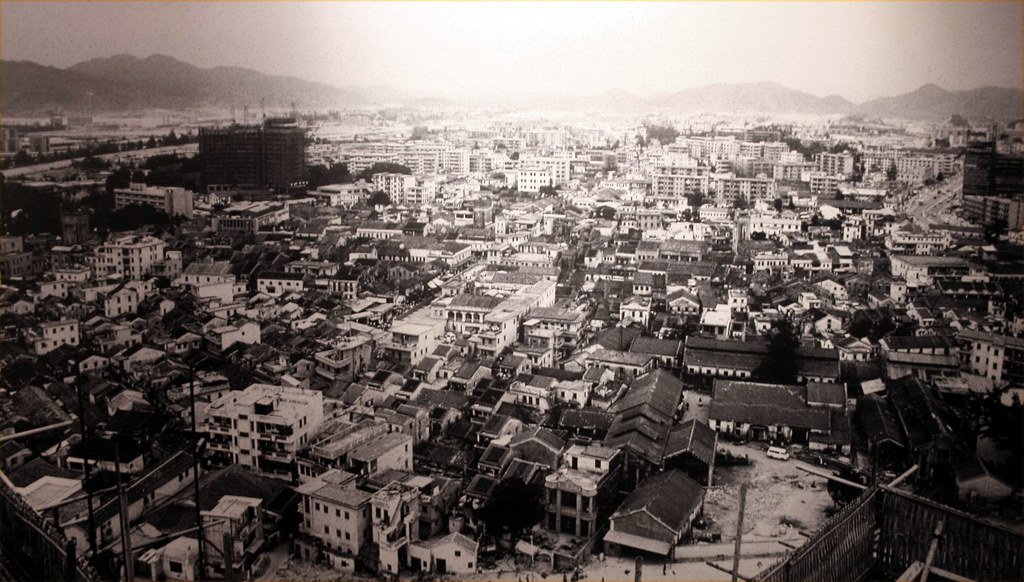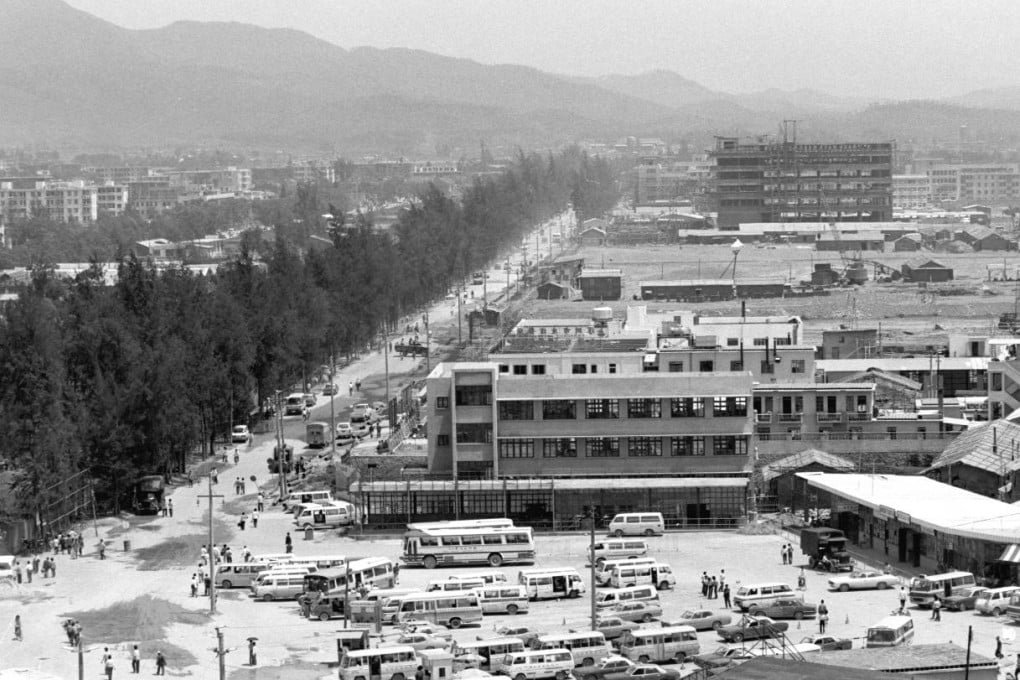Shenzhen Then and Now
Shenzhen Then
Shenzhen is a vibrant city located in the south-central region of Guangdong province, southeastern China.
Situated along the coast of the South China Sea and just north of Hong Kong, it has transformed from a small fishing village into one of the most dynamic urban centers in the world.
The city’s rapid development began in the late 20th century when it was designated as China’s first Special Economic Zone in 1980, paving the way for significant economic growth and attracting investment from both domestic and international sources.
The name “Shenzhen” itself has interesting historical roots. The earliest known mention of the name can be traced back to 1410 during the Ming dynasty.
The local dialect refers to the drains found in paddy fields as “Zhen”, which translates to ‘ditch’ or ‘drain.’
This reflects the region’s agricultural past and the importance of water management in its development.
The term “Shen”, meaning ‘deep,’ was added to describe a particularly deep drain that existed in the area.

This naming convention highlights how the landscape and local practices influenced the identity of the city long before its modern transformation.
Today, Shenzhen is recognized not only for its rapid urbanization but also for its technological advancements, such as housing for major companies such as Huawei and Tencent.
As a city that embodies the spirit of innovation and entrepreneurship, Shenzhen stands as a testament to China’s economic reforms and its vision for the future.
Related Article: Beijing Then and Now
Shenzhen History
Shenzhen’s history is a rich tapestry that spans thousands of years, with evidence of human habitation dating back to the mid-Neolithic period.
Over the past 6,700 years, the region has seen continuous human settlement, with notable historic towns such as Nantou and Dapeng emerging over 600 years ago.
The area was integrated into the administrative framework of imperial China as early as 214 BC when it became part of the Nanhai Commandery under Emperor Qin Shi Huang.
This marked the beginning of its assimilation into the broader Zhongyuan culture.
Related Article: Mumbai Then and Now
Throughout the centuries, the region has undergone significant administrative changes, evolving from commanderies to counties, with Bao’an County being established around the modern town of Nantou in the early centuries AD.
During the Tang and Song dynasties, Shenzhen’s strategic location turned it into an important trade hub, particularly for salt and spices.
The region was also recognized for its pearl production during the Yuan dynasty.
In the early Ming era, the area gained prominence among sailors who would pray at the Mazu temple in Chiwan before embarking on voyages to Southeast Asia.
Related Article: Kuala Lumpur Then and Now

However, the Qing dynasty’s response to Ming loyalist rebellions led to significant territorial changes, including the resettlement of coastal residents inland.
This shift reduced Bao’an County’s territory and altered its administrative status until the region faced further upheaval during the Opium Wars, leading to cessions of territory to British colonial rule.
The early 20th century brought further transformations as local residents rebelled against the Qing administration in 1911, coinciding with the opening of the Kowloon-Canton Railway, which facilitated trade and travel and connected Shenzhen more closely with Hong Kong.
As the mid-20th century approached, Shenzhen became a focal point for refugees escaping turmoil in mainland China, resulting in a significant population increase.
Related Article: Bangkok Then and Now
The town’s economic potential was recognized in the late 1970s when it was chosen as the first Special Economic Zone (SEZ) in China, spurring rapid urbanization and economic growth under the policies of reform and opening-up initiated by Deng Xiaoping.
Since the establishment of the SEZ in 1980, Shenzhen has transformed from a small fishing village into a bustling metropolis.
The city’s rapid development has included the establishment of the Shenzhen Stock Exchange in 1990 and the expansion of its administrative authority in the early 1990s, positioning it as a vital economic hub.
Related Article: Seoul Then and Now
The continued integration of industrial zones and trade cooperation areas has further solidified Shenzhen’s role as a leading center for innovation and investment in China.
More recently, in 2019, the central government designated Shenzhen as a pilot demonstration zone for socialism with Chinese characteristics, signaling its importance in China’s broader economic and social reforms.
Today, Shenzhen stands as a testament to rapid urban growth and transformation, embodying the dynamic interplay of history, culture, and modern economic strategy.
Related Article: Tokyo Then and Now
Shenzhen Now

Shenzhen is a vibrant metropolis located in Guangdong Province, China, strategically positioned on the eastern bank of the Pearl River estuary.
Its geographical location, bordering Hong Kong to the south and neighboring cities like Dongguan and Huizhou, has greatly influenced its development as a key economic hub.
Established as a special economic zone (SEZ) in 1980, Shenzhen has rapidly transformed from a small fishing village into a bustling urban center known for its innovation, technology, and manufacturing prowess.
Related Article: Hong Kong Then and Now
The city’s unique status allows it to experiment with economic reforms and attract foreign investment, which has played a crucial role in its growth.
As of 2020, Shenzhen boasts a population of approximately 17.5 million, making it the third most populous city in China, following Shanghai and Beijing.
This significant population influx is largely attributed to its booming economy and opportunities for employment, particularly in high-tech industries and finance.
Related Article: Dubai Then and Now
The city has become a melting pot of cultures, with residents from all over the country and beyond contributing to its dynamic and diverse community.
Shenzhen’s rapid urbanization is also reflected in its skyline, which is dominated by modern skyscrapers, innovative architectural designs, and sprawling urban infrastructure.
The Port of Shenzhen stands out as one of the busiest and most efficient container ports in the world, ranking fourth globally.
Related Article: Singapore Then and Now
This vital transportation hub plays a critical role in facilitating international trade and commerce, connecting Shenzhen to global markets.
The port’s capabilities have enabled the city to emerge as a leader in export-oriented manufacturing and logistics, further solidifying its position as a critical node in China’s economic landscape.
As Shenzhen continues to evolve, it remains at the forefront of China’s economic transformation, embodying the country’s ambitions for modernization and technological advancement.
Related Article: Shanghai Then and Now
FAQs
Shenzhen is renowned for its rapid economic growth and development as a major global technology hub.
Established as China’s first special economic zone in 1980, it has transformed from a small fishing village into a bustling metropolis known for innovation, manufacturing, and its vibrant startup ecosystem.
The city is home to major tech companies, including Huawei and Tencent, and is recognized for its impressive skyline and significant role in international trade.
Shenzhen is located in China, specifically in Guangdong Province, directly adjacent to Hong Kong to the south.
It serves as a vital economic bridge between mainland China and Hong Kong, contributing to its significance in regional trade and commerce.
Shenzhen is religiously diverse, with a predominance of Buddhism, Taoism, and Confucianism, reflecting traditional Chinese beliefs.
There is also a growing presence of Christianity, as well as other religions due to its multicultural population.
The city is known for its secular atmosphere, with many residents identifying as non-religious.
The primary language spoken in Shenzhen is Mandarin Chinese (Putonghua), the official language of China.
However, Cantonese is also commonly spoken due to the city’s location in Guangdong Province.
Additionally, with its diverse population, English is widely used, especially in business and among expatriates.






























